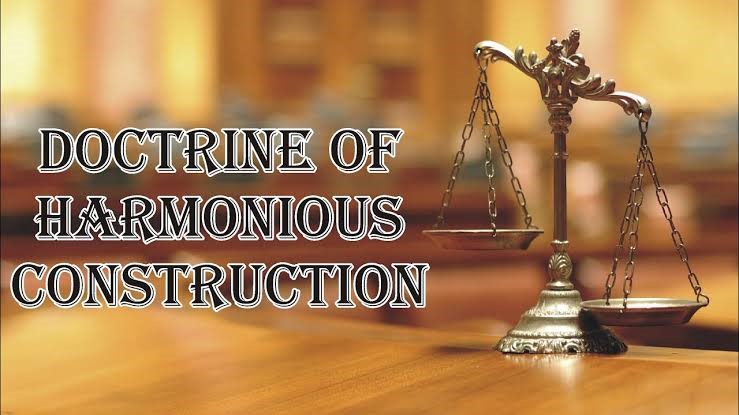
Principle of harmonious construction

13.04.2024
Principle of harmonious construction
|
For Prelims: About the principle of harmonious construction,Governing principle of harmonious construction,About Limitation Act, 1963 |
Why in the news?
Recently eight principles have been laid down by the Supreme Court by providing harmonious construction to Sections 3 and 5 of the Limitation Act, 1963.
Important points:
- While refusing to condone the delay of 5659 days in filing the appeal, eight principles have been laid down by the Supreme Court by providing harmonious construction to Sections 3 and 5 of the Limitation Act, 1963.
- These eight principles were determined by Pankaj Mithal.
About the principle of harmonious construction:
- This is an essential rule for the interpretation of laws.
- The principle of harmonious construction states that, when there is a conflict between two or more statutes or between different parts or provisions of a statute, we should interpret them in such a way that they are harmonious.
- That is, when there are discrepancies, we should try to establish harmony between the conflicting parts so that one part does not negate the purpose of the other.
- It is rooted in the fundamental legal principle that every statute is made with a specific purpose and intention.
- But when two provisions are contradictory, it may not be possible to enforce both of them, and as a result, one is contrary to the established basic principle of 'ut res magis valet quam perit' (that one thing is better understood). Will be made redundant.
- Therefore, the court should interpret the statutes in a manner that removes the inconsistency and enables both the provisions to work together harmoniously.
- The aim of this principle is to make all the provisions effective.
- If it is impossible to harmoniously interpret or harmonize the various parts or provisions, it is the responsibility of the judiciary to take the final decision.
- The doctrine of harmonious construction originated from the landmark judgment of Shri Shankari Prasad Singh Deo v. Union of India (1951), when a conflict was found between fundamental rights and the DPDP.
Governing principle of harmonious construction:
- In the landmark case of Commissioner of Income Tax vs. M/s Hindustan Bulk Carriers (2000), the Supreme Court had established five fundamental principles to govern the rule of harmonious construction.
- Courts should make every effort to avoid conflicts between seemingly conflicting provisions and attempt to interpret these provisions in a manner that will harmonize them.
- A provision of one section of a statute should not be used to override a provision of another section, unless the court is unable, despite hard work, to find some way of reconciling their differences.
- In cases where it is impossible to completely resolve inconsistencies between provisions, courts should interpret them in a manner that makes both provisions effective to the maximum extent possible.
- Courts should consider whether an interpretation that makes a provision redundant or worthless is against the essence of harmonious construction and should be avoided.
- Reconciling two conflicting provisions means preserving any statutory provision and not destroying or making it ineffective.
About Limitation Act, 1963:
- The Limitation Act, 1963 is a statute enacted by the Parliament that prescribes the time limit within which legal proceedings can be initiated for various civil and criminal cases.
- This act sets specific time periods, known as limitation periods, within which a person must file a suit or take legal action to enforce his rights or seek remedies for a particular cause of action.
- Once the limitation period expires, the right to initiate legal proceedings becomes barred by law, and the aggrieved party loses the right to seek legal redress.
- The Limitation Act, 1963 applies to civil suits, appeals and applications filed in courts throughout India, with the exception of cases where specific statutes provide different limitation periods.
- This Act prescribes a limitation period of 3 years for filing a suit relating to recovery of debt, breach of contract, or injury to a person.
- The limitation period generally begins on the date the cause of action arises, which is when the aggrieved party becomes entitled to sue.
Source: Indian Express